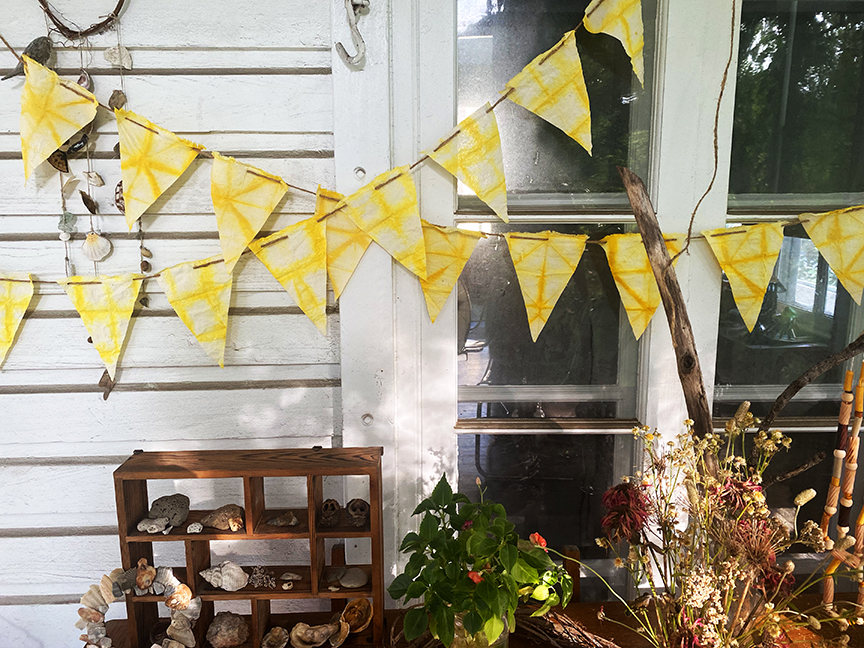
I am not a huge bunting person generally, but our summer nature table needed more sunny yellow. At the same time i had been meaning to make some non-indigo shibori forever. Shibori is a Japanese dying technique that is the great grandparent of tie dye. (It was introduced in Japan about 1300 years ago.) Most often used with indigo dye, fabric is folded or bound so that only the edges take dye which creates beautiful patterns. It was a favorite way to refresh old or damaged clothing. I especially like the triangle fold method, the result is almost sun like! While it may seem intimidating, the folding process is quite straightforward and easy to do. Turmeric as a dye is the brightest sunniest yellow with a tinge of orange. Like all natural dyes, turmeric is not permanent. It’s reasonably lightfast, but will wash out over time so it’s great for something like this that doesn’t need to be washed frequently (like clothing, although I liked this so much I made shirts too!) So add some sunny turmeric dyed fabric to your nature table or next summer party!
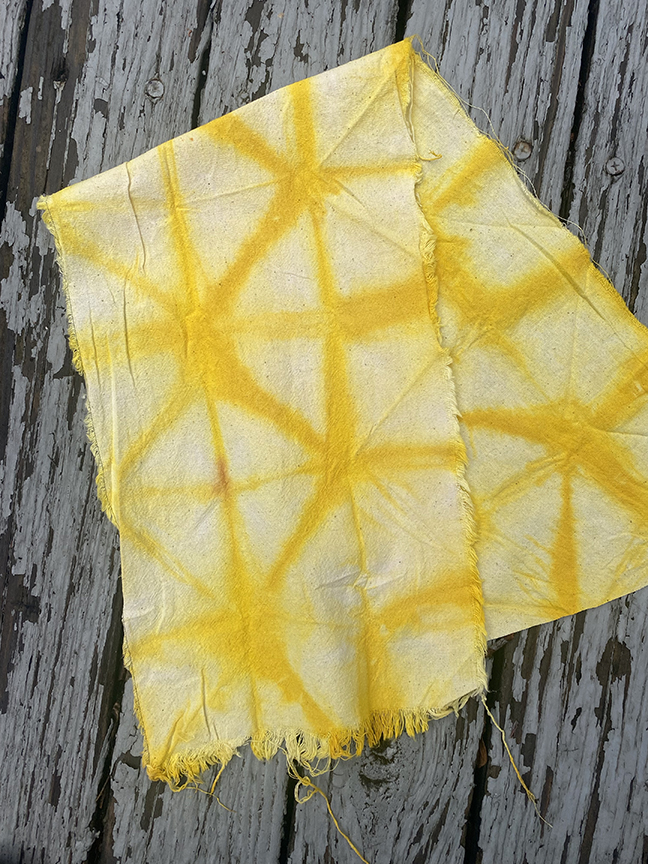
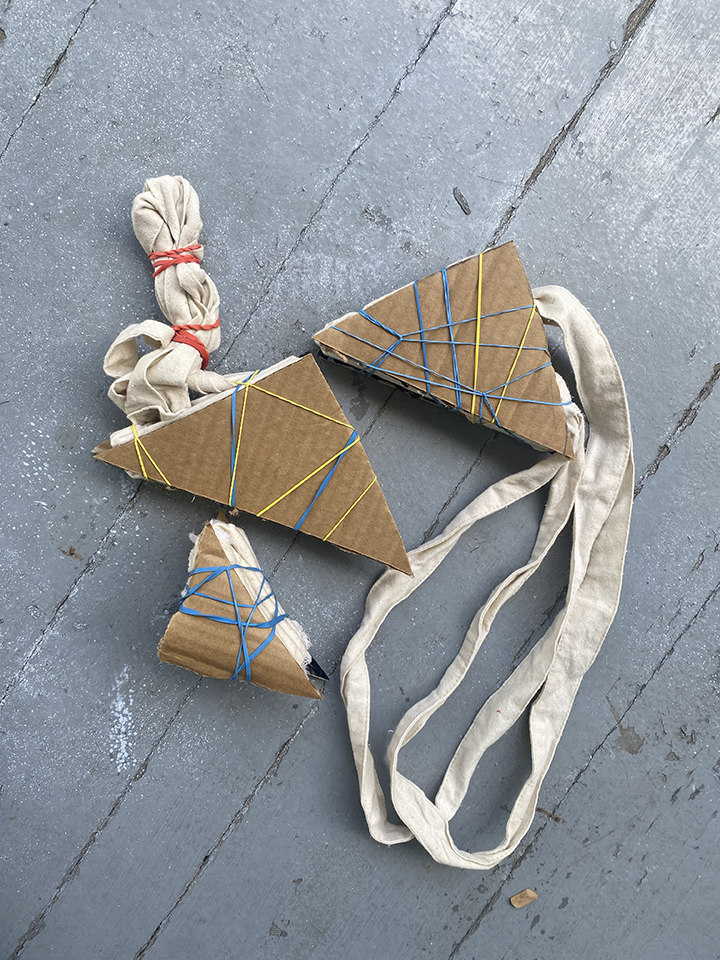
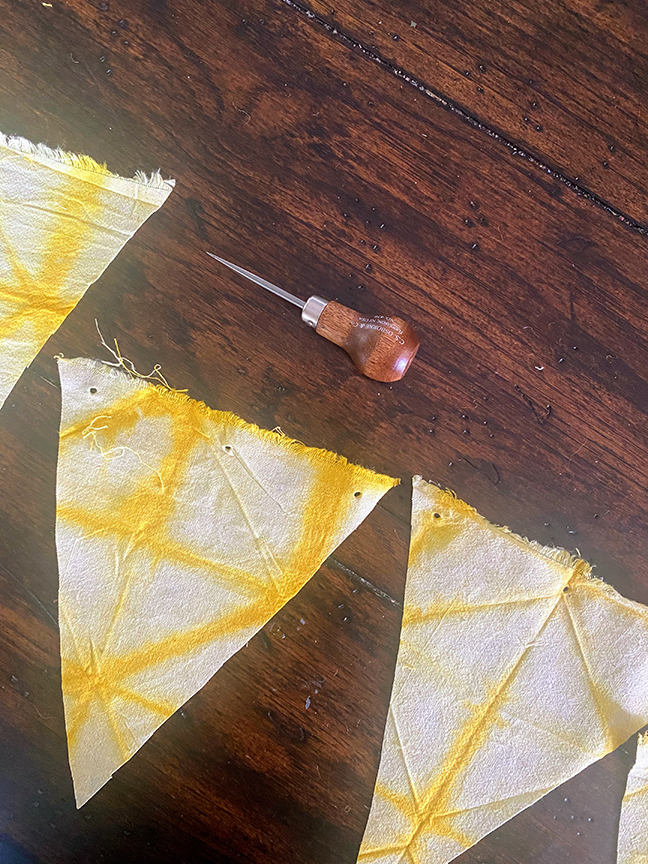
Materials:
- unbleached cotton fabric (muslin), washed and dry
- turmeric powder (You’ll need half the weight of your dry fabric*)
- water
- cardboard
- rubberbands
- dye pot (I usually recommend a non-food pot, but turmeric is safe for a cooking pot)
- twine
- clear tape (optional)
- awl
Method:
Most natural dyes require a mordant that helps the color stick to the fabric, but turmeric is so strong that you can completely skip this step. What you will need to do is determine the dry weight of your fabric (or WOF) with a kitchen scale. Divide the WOF in half to get the amount of turmeric you will need. (For example: my fabric weighed 218 grams, so I used 109 grams of turmeric.)
Once you have weighed your fabric and measured out your turmeric, start the dye pot. Add the turmeric to a large pot and fill with water. bring to a boil while you move on to the next step. Once it boils turn it down to a simmer.
Next, wet the fabric completely to help the dye sink in. Then fold the fabric.
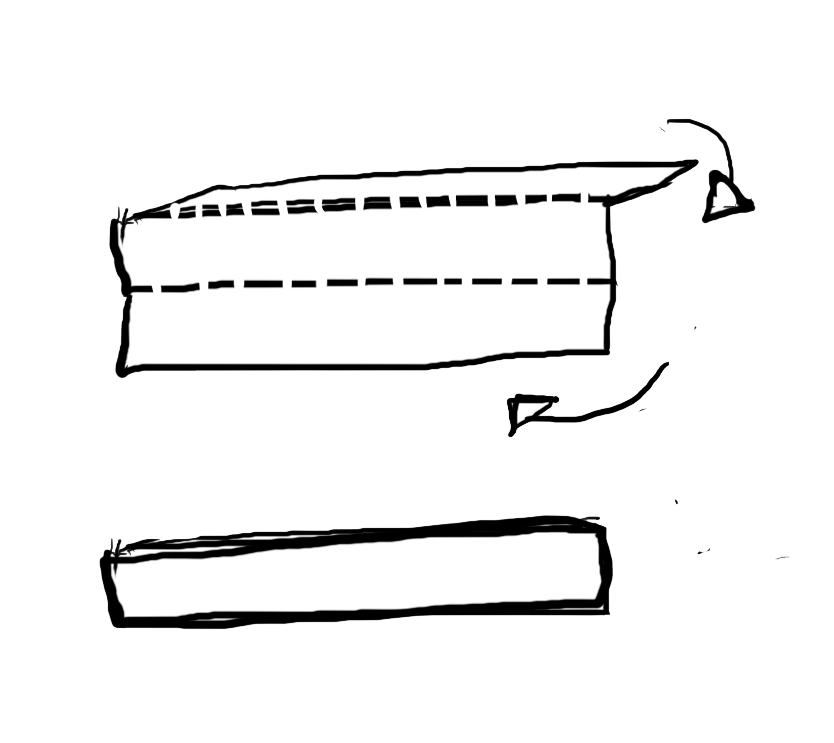
For this bunting I cut a strip of fabric that was about 7 inches by 2 yards, you can make it whatever size you want, but a long skinny strip of fabric will make t easy to cut the triangles later. Fold the fabric into thirds lengthwise.
Next fold a triangle. Flip the fabric over and fold another triangle. Keep flipping and fan folding until you have reached the end of the fabric.

Press the folded triangle down with your hands to compress it and then cut two pieces of cardboard into triangles of around the same size. (This is traditionally done with wood, I was so excited when I successfully tested it with cardboard, it’s so much faster and easier!) Place one piece of cardboard on each side of the folded triangle like a sandwich.
Secure the cardboard/ folded fabric sandwich with rubber bands.
Turn off the burner heating the dye and add your folded and cardboarded fabric. Let it sit for an hour or two as the dye cools down.
Remove the dyed fabric from the pot and rinse under cool water until it runs clear. Remove the cardboard and rubber bands and unfold (this is the best part!) Give it one more rinse to ensure the water is running clear and set it out to dry.
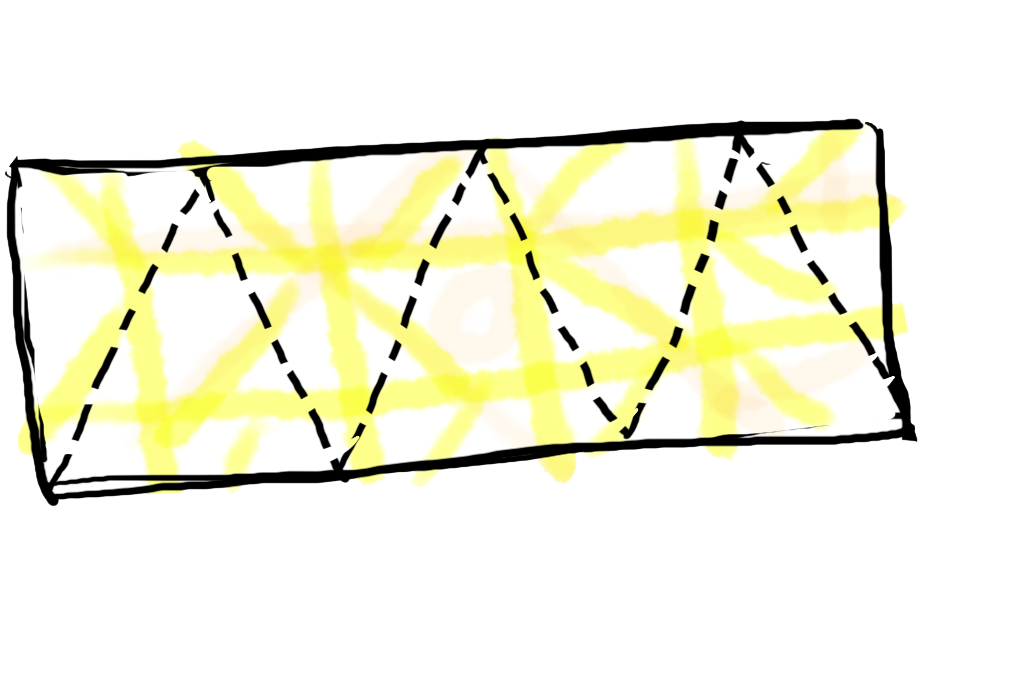
Once dry, cut the fabric into equal triangles the width of your fabric.
Punch three holes at the top of each triangle with an awl and thread twine through them. (Wrap a small piece of clear tape around the end of your twine to make it easier to thread through the holes.) You could instead sew the bunting together on a sewing machine if you prefer, but I like the rustic look of the twine.
Hang your bunting and enjoy!
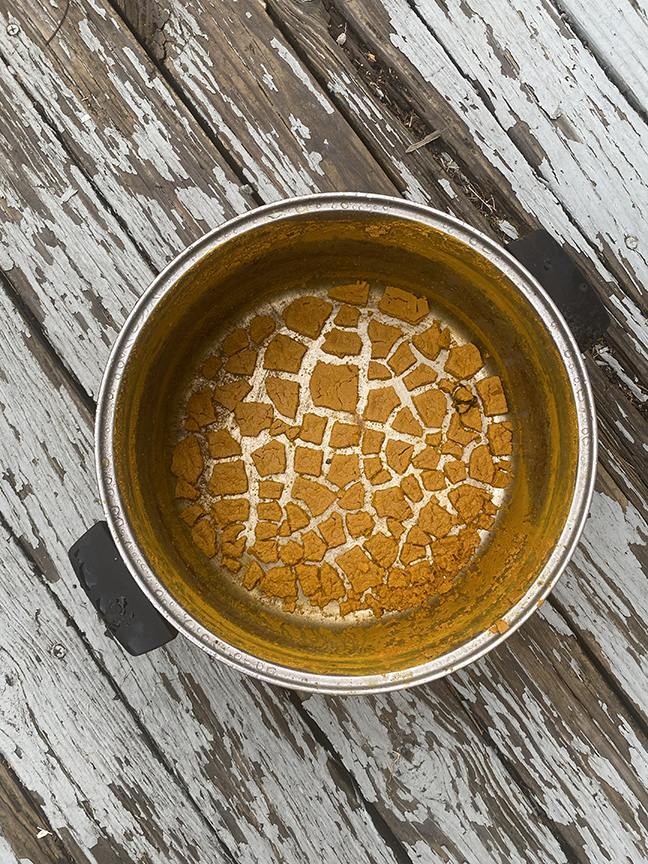



[…] Turmeric Shibori Bunting […]